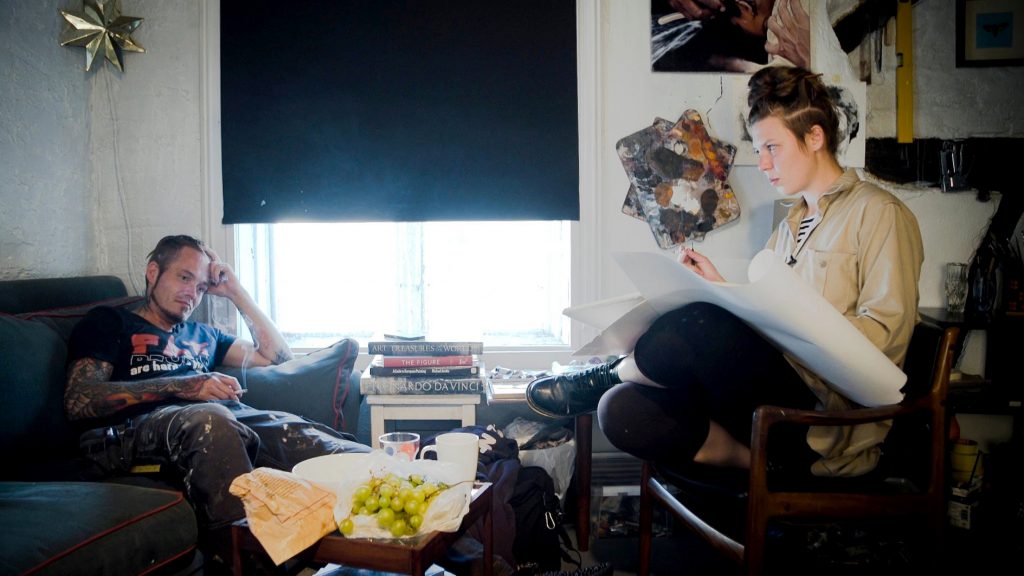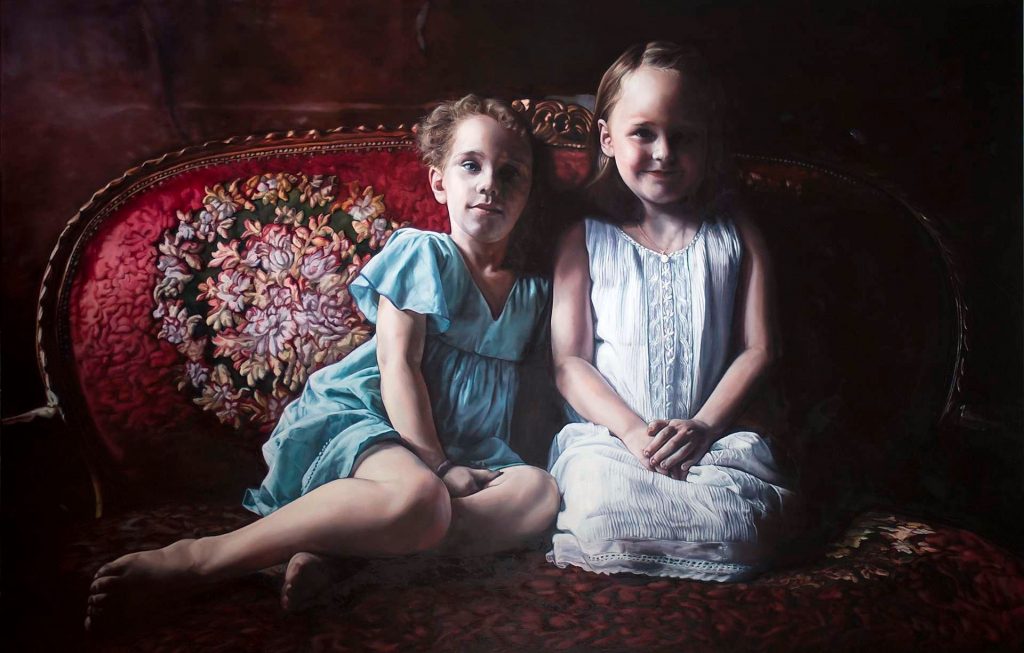(THIS ARTICLE IS MACHINE TRANSLATED by Google from Norwegian)
One of the movies that got the most attention Sundance film festival in February, was the Norwegian director The artist and the thief av Benjamin Ree.
Oslo's residents may remember the theft of art in April 2015, when the Czech artist Barbora Kysilkova (Barbar) was preparing for an exhibition she was going to have at Gallery Nobel at Frogner. At lunchtime, two thieves broke into the gallery and painstakingly removed two large canvases, pin by pin, from the frames they were mounted in. Thanks to surveillance videos, police caught the two thieves, but the paintings Swan Song og Chloe and Emma was never found.
In the film, we see Kysilkova witnessing the crime through the surveillance video: "They dredged them with rope – tape and rope around the canvases!" she exclaims. The meta-observation sets the tone for the film's changing perspectives.
Incredible premise
Art theft movies are nothing new. Fakes, thefts, legal disputes over rights, unknown genius-trained artists – the stories have found their way to the movie screen, all together. What's new in this context is Rees's twist on theft history, in both premise and structure.

First, you have a premise that you would hardly think was true if this was fiction and not a documentary: During the trial, we hear a narrative voice while watching drawings from the courtroom, where Kysilkova is also present. Instead of pushing one thief (Karl-Bertil Nordland) to tell where the valuable paintings are, Kysilkova asks during the break in the district court whether Nordland will sit model so she can paint a portrait of him. He answers yes.
Second, you have the structure of the film, which alternates between Nordland and Kysilkova's perspective, sometimes during the same conversation. The innovative narrative concept exposes the assumptions and generalizations we often have, also in terms of appearance: Nordland is a tattooed addict who dresses in T-shirts with slogans like "Crime Pays", for example.
On one occasion, Kysilkova's fiancée, Øystein Stene, challenges the artist to take a closer look at the friendship with Nordland. What about our assumptions about the truth: How much do we project? Or cover? And what do we miss?
Ree claims he wants to go into questions that confront the audience: "This is a movie that will give the audience many questions they don't necessarily get answers to," he says.
agreeableness
Intense therapeutic conversations are captured by the camera. Nordland shows its vulnerability and a willingness to share its traumatic past.
Any concern about the film's performative nature, poses and portrayals disappeared in a touching moment of humanity that made me cry. Kysilkova treats Nordland with a caution that makes an impression. And her paintings of Nordland make me wonder what his life would have been like if someone had really bothered to "see him".
"This is a movie that will give the audience a lot of questions they don't necessarily get answered." Benjamin Ree
An American audience member told me that he believed an understanding of Norwegian culture was necessary to understand the forgiveness and generosity Kysilkova shows Nordland. But what this documentary can teach us is that it is best not to assume and generalize.

The artist and the thief had its opening night at the Sundance Film Festival. It is the only Norwegian-directed documentary that has received this honor, and Ree is the first Norwegian director to have been invited to the World Cinema Documentary Competition (three Norwegian productions have participated in the past).
For Ree, the work on the film offered constant surprises: "I didn't know what would happen in this story," he says. The film was intended to be a short documentary of 10 minutes, then increased to 30 minutes and then to a 60 minute documentary. Ree filmed for 3 years – and the film was 102 minutes long.
Standing applause
The film screenings at Sundance were sold out, and the engagement was high. Standing applause became the norm, and there were full houses during the debate after the film screenings – many were concerned about Nordland's fate.
For Rees, the experience of Sundance was better than expected: "It's the best audience I've ever seen a movie for."
Another surprising twist in this story is that Kysilkova became a celebrity at Sundance. Wherever she went, the festival audience would take a selfie with her.
The artist and the thief received the award for Creative Storytelling, the World Cinema Documentary Special Jury Award for Creative Storytelling, at Sundance.
See also interview and English version with the film's Norwegian director Benjamin Ree in Modern Times Review enclosed for MODERN TIMES subscribers.
The film has a Norwegian premiere at the cinema in the fall of 2020. It should be shown of IFFR Rotterdam and the film festival in Thessaloniki. (The film was also shown during the HUMAN film festival in February.)






